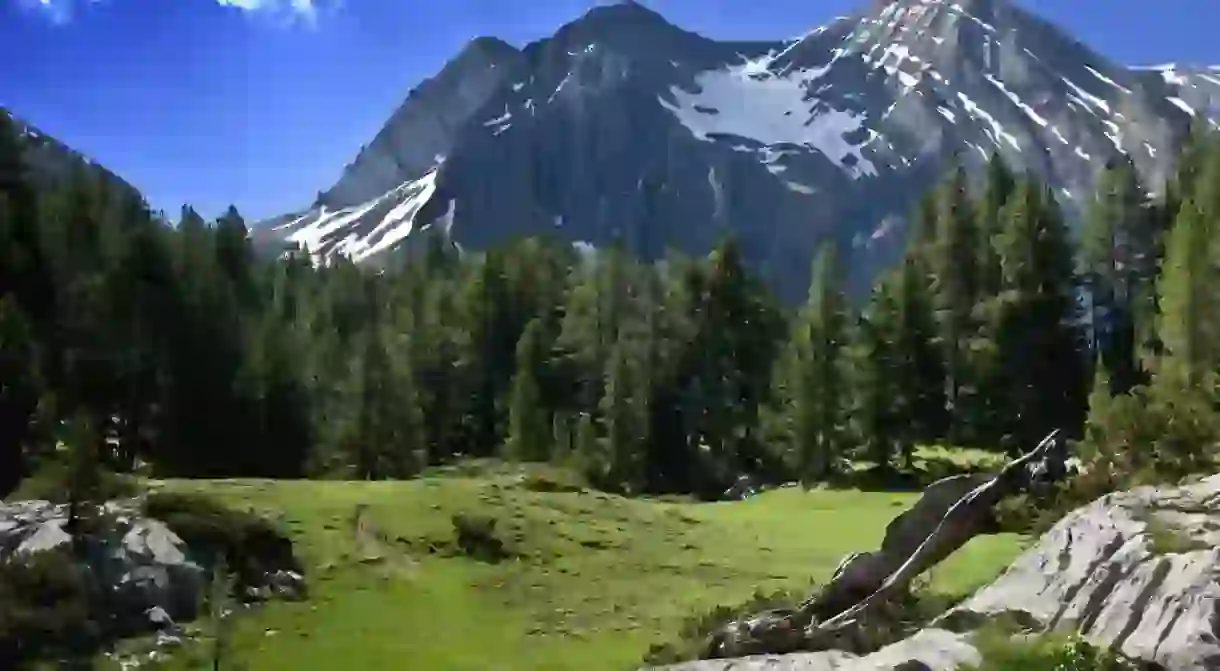The Top 10 Things to See and Do in the Aragonese Pyrenees

Located on the border between France and Spain, the Aragonese Pyrenees are home to majestic mountains, striking rock formations and incredibly diverse flora and fauna. They’re also one of the best places in Spain for outdoor activities, not to mention having a unique history and a number of notable landmarks. Here’s our pick of the best activities.
Huesca
The city of Huesca is the capital of the eponymous Huesca province, home to much of the Aragonese Pyrenees. One of the smallest provincial capitals in Spain, Huesca still manages to boast three Michelin-starred restaurants: Tatau, Las Torres and Lilas Pastia. In terms of sightseeing, a number of ancient churches and religious buildings including Huesca Cathedral are worth checking out.
Canyoning in the Sierra de Guara
For those who aren’t familiar with the sport, canyoning is a type of outdoor activity which involves travelling through canyons using a range of means including jumping, walking, swimming and abseiling. The Sierra de Guara, located not far from the city of Huesca, has become famous for canyoning thanks to its chiselled gorges. Those less adventurous can stick to a good old fashioned hike along the river bank.

Castle of Loarre
Located not far from Huesca, the Castle of Loarre is an 11th century Romanesque castle which was once on the border between the Christian and Muslim kingdoms. Due to the nature of the jagged terrain, the castle is composed of a series of small buildings surrounded by a wall and a number of towers. Movie fans may have spotted the Castle de Loarre in the 2005 film Kingdom of Heaven.
Los Mallos de Riglos rock formations
Formed hundreds of thousands of years ago, the Mallos de Riglos are effectively compacted rubble which, over time, had washed down from the mountains in the Pyrenees. Eventually the more porous rock eroded away to reveal these incredible formations which look like oversized teeth pointing out of the earth. Thanks to their sheer drops, the Mallos de Rigos are popular with climbers, but the area is pleasant to explore on foot too.

Explore medieval buildings in Jaca
Sometimes called the ‘pearl of the Pyrenees’, Jaca is best known for both its historic buildings and for being the gateway to some of Aragon’s best ski domains. The 16th-century military fort, known as the Ciutadella or San Pedro castle, is a huge pentagon-shaped edifice which has been declared a national monument. Other noteworthy sights include the 11th-century Romanesque cathedral and the 15th-century Clock Tower.
The Monastery of San Juan de la Peña
Once the biggest monastery in Aragon, the Monastery of San Juan de Peña or ‘Saint John of the Cliff’ is part of the Aragonese Camino de Santiago pilgrimage route. One of the most striking features of this ancient religious complex is the two-tiered church which is in part carved into the side of the cliff. Other noteworthy features include the Royal Pantheon, home to the remains of some of Aragon’s great kings, and the numerous stucco medallions featuring scenes from memorable battles.

White water rafting near Murillo de Gallego
When the winter snows melt, the rivers in the Aragonese Pyrenees gush with water and make for some pretty challenging rafting – level 4 at times. There are a number of companies operating out of the town of Murillo de Gallego which offer rafting excursions for beginners to confirmed rafters. This is a great way to spend an action-packed day and also learn about Aragon’s landscape and history.
Hiking in the Parque Nacional de Ordesa y Monte Perdido
Located in the far north of Aragon, the Parque Nacional de Ordesa y Monte Perdido is the region’s largest natural park and has been recognised by UNESCO for the diversity of its flora and fauna. The Monte Perdido is the park’s highest peak and the third highest in the Pyrenees, reaching 3,355m (11,007 feet) at its summit. However, there are a number of more manageable peaks to conquer nearby, as well as the valleys of Ordesa, Añisclo or Escuaín. The small town of Torla is a good base from which to explore the park and has an information desk.

Skiing at Formigal
Considered one of the best ski resorts in Spain, Formigal offers excellent on and off piste skiing, with over two thirds of the 91 pistes being either reds or blacks. Popular with families but also younger crowds, the ares has a number of restaurants offering hearty mountain food on the pistes, as well as relatively lively après-ski scene at the bottom of the slopes. Little ones can enjoy tobogganing or the snow garden, while other features include a timed slalom piste, freestyle park and border cross.
Wine tasting in Somontano
Meaning ‘beneath the mountains’, the Somontano wine-growing region is one of Aragon’s four ‘Denominación de Origen’ or DO regions. Bordered to the north by the spectacular peaks of the Pyrenees and to the south by the Vero river, the Somontano DO is home to around 33 wineries which make both red and white wine. Take the Ruta del Vino Somontano and discover the different bodegas, their stories and most importantly, their wines.













